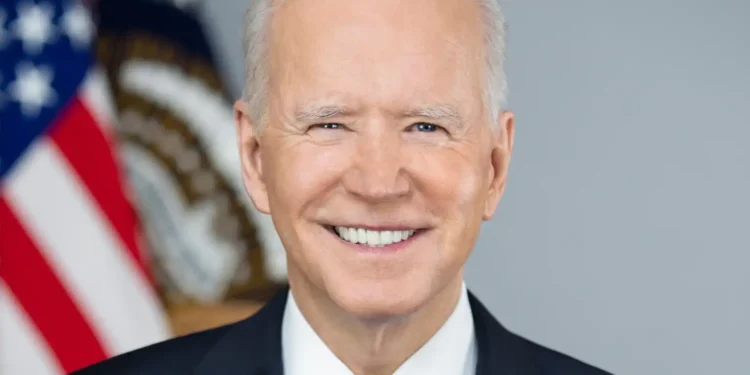U.S. President Joe Biden has accused his predecessor and likely election opponent Donald Trump of using Nazi rhetoric following the publication of a video referencing a “unified Reich.’’
Trump is using “Hitler’s language’’.
That’s not America’s, Biden said in a campaign video released.
In the short clip, the Democrat held a phone in his hand and said, referencing the video, is this on his official account? Wow.
Earlier, on Monday, Trump had shared a video which was later deleted on his social media site Truth Social, showing mocks of newspaper articles that would be written if Trump won the presidential election in November.
Among the bits of text featured was a subheading referring to the creation of a unified Reich.
The term, empire in German, is often associated with the Third Reich under Adolf Hitler’s Nazi regime from 1933 to 1945.
The word Reich in the video presumably refers to the founding of the German Reich in 1871, with the text being taken from a Wikipedia entry on World War I, according to U.S. media.
The video was created using a ready-made newspaper article mask.
According to the reports, it has also been used in other clips circulating online,.
Other newspaper headlines in the video published on Trump’s platform also make reference to World War I.
Trump’s team later confirmed that the clip had been removed from his account.
A spokeswoman for his campaign team said that “it was not a campaign video, it was created by a random account online and reposted by a staffer who clearly did not see the word.’’
Biden also attacked the Republican, who is hoping to return to the White House, at a campaign event in Boston on Tuesday.
The 81-year-old said that “the threat that Trump poses is greater in the second term than it was in the first,’’ according to reporters travelling with him.
He called Trump a little unhinged and accused him of seeking revenge after losing the 2020 presidential election.
Biden and Trump were all but guaranteed to face off on Nov. 5 in a rematch of the 2020 vote.
They both achieved the required number of delegates to be nominated as candidates of the Democratic and Republican parties respectively.
Trump has been using radical rhetoric in his election campaign, including hateful and dehumanising language, as well as making racist statements and inciting hatred against minorities.
The 77-year-old also compared Biden’s government to the Gestapo, the official secret police of Nazi Germany. (dpa/NAN)











